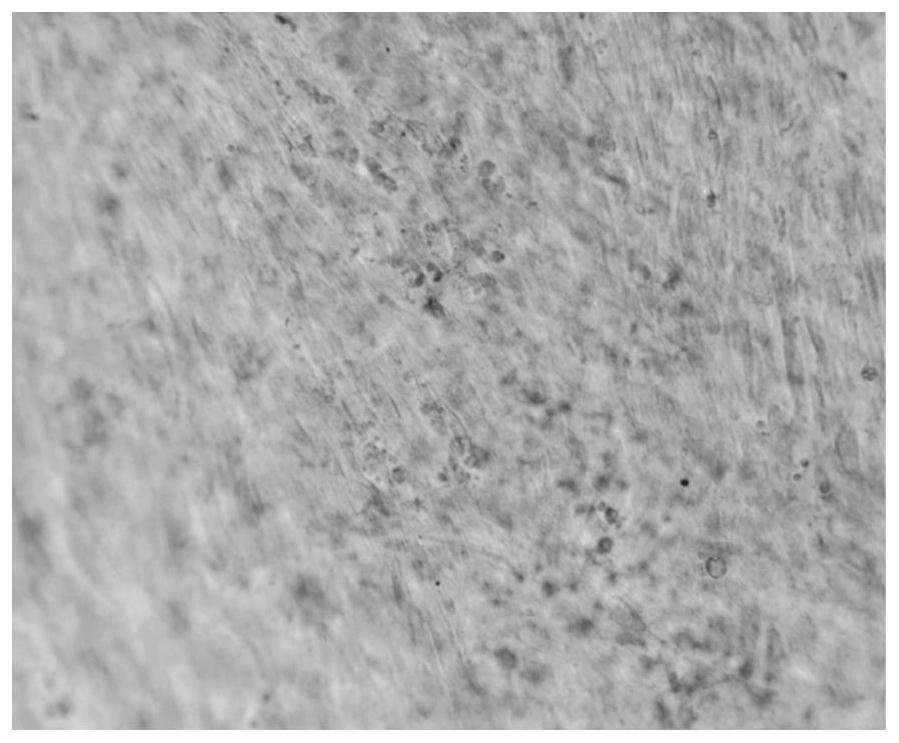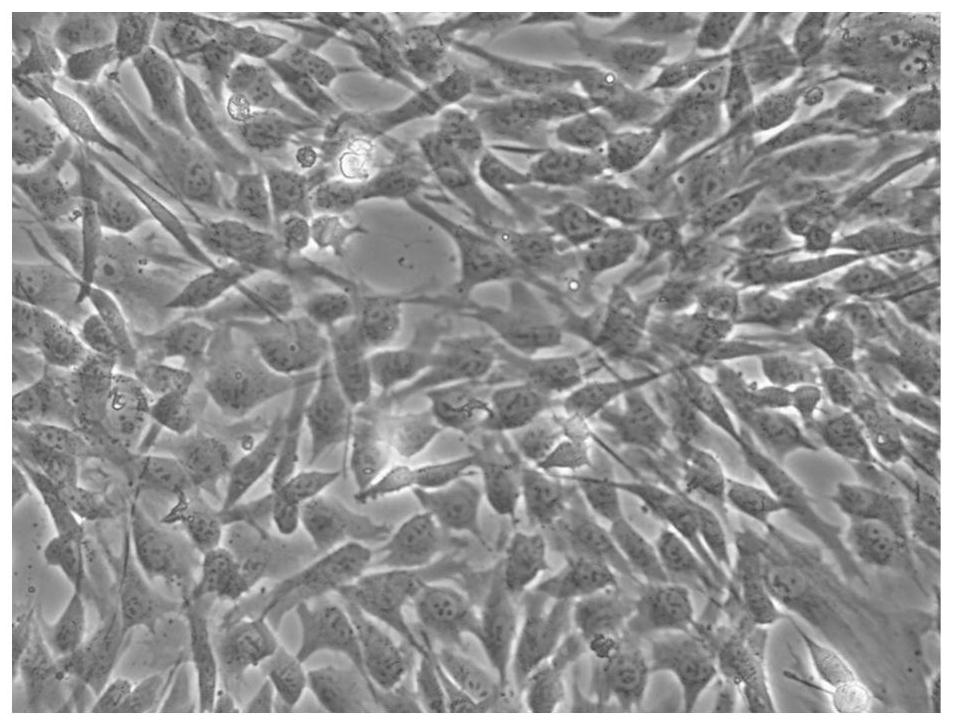Method for culturing islet cells suitable for clinical application
A clinical application technology of islet cells, which is applied in the field of biomedicine, can solve the problems of transplantation scheme, transplantation amount, expected therapeutic effect cannot be evaluated, islet cell glucose stimulation response varies greatly, druggability cannot be effectively detected and evaluated, etc., to achieve no miscellaneous Effects of cell residue, improved cell transformation rate, and small batch-to-batch differences
- Summary
- Abstract
- Description
- Claims
- Application Information
AI Technical Summary
Problems solved by technology
Method used
Image
Examples
Embodiment 1
[0038] Example 1: Obtaining islet cells by induction and culture of umbilical cord mesenchymal stem cells
[0039] The full-term umbilical cords were selected and processed and cultured within 24 hours. First, cut the umbilical cord into pieces of 8-16mm 3 The small pieces were cultured by the tissue block culture method, and the culture medium was selected from the serum-free medium of mesenchymal stem cells. After 18 days of culture, the cells were subcultured until the cells were congested until the mesenchymal stem cells were cultured to the fifth generation. The cells were tested for bacteria, fungi, and mycoplasma. The results were all negative, and the cell viability was 95%. The surface markers of mesenchymal stem cells were detected, and the test results were CD73, CD90, CD105, CD44, CD166≥95%, CD11b, CD19, CD79a, CD34, CD45, HLA-DR≤2%. Nucleic acid / antibody detection method was used to detect HIV-1 / 2, HBV, HCV, HTLV-1 / 2, EBV, CMV, TP, B19, HPV, HHV and other path...
Embodiment 2
[0049] Example 2: Using adipose-derived mesenchymal stem cells to induce and culture islet cells
[0050]Adipose tissue from healthy individuals was collected and processed within 24 hours. First, the adipose tissue was washed with a sufficient amount of normal saline, centrifuged at 1000rpm / min for 20min, the middle adipose layer tissue was taken, digested with type I collagenase for 30min, centrifuged at 1000rpm / min for 10min, the pelleted cells were taken and washed twice with PBS. According to the cell volume of 10000 / ml, inoculated in T175 culture flasks, and after 14 days, the cells were congested and passaged until the mesenchymal stem cells were cultured to the fifth generation. Bacteria, fungi, and mycoplasma were tested on the fifth-generation cells, and the results were negative, and the cell viability was 95%. Flow cytometry was used to detect the surface markers of mesenchymal stem cells, and the test results were CD73, CD90, CD105, CD44, CD166≥95%, CD11b, CD19...
Embodiment 3
[0060] Example 3: Detection of pancreatic islet cells
[0061] 1. Detection of the purity of islet cells
[0062] Add 50 mg of dithizone (SIGMA-ALORCH, product number: 43820-10G) to 5 ml of DMSO, take 1 ml of the above solution, add 20 ml of Hank's containing 2% fetal bovine serum, mix well and filter with a 0.22 μm filter, take 3 0.5 ml of each independent batch of islet cell suspension was placed in a 24-well plate, added dithizone staining solution, stained for 30 s, observed under an inverted microscope, and the purity of islet cells was calculated.
[0063] Islet cell purity = (number of positive islets stained with dithizone / total number of purified cell clusters) × 100%. The test results showed that the three batches of islet cells were all stained in strong brownish red, and the purity of the islet cells was 100%. Figure 9 shown.
[0064] 2. Transformation rate of islet cells
[0065] Three independent batches of islet cell induction culture were carried out. ...
PUM
 Login to View More
Login to View More Abstract
Description
Claims
Application Information
 Login to View More
Login to View More - R&D
- Intellectual Property
- Life Sciences
- Materials
- Tech Scout
- Unparalleled Data Quality
- Higher Quality Content
- 60% Fewer Hallucinations
Browse by: Latest US Patents, China's latest patents, Technical Efficacy Thesaurus, Application Domain, Technology Topic, Popular Technical Reports.
© 2025 PatSnap. All rights reserved.Legal|Privacy policy|Modern Slavery Act Transparency Statement|Sitemap|About US| Contact US: help@patsnap.com



